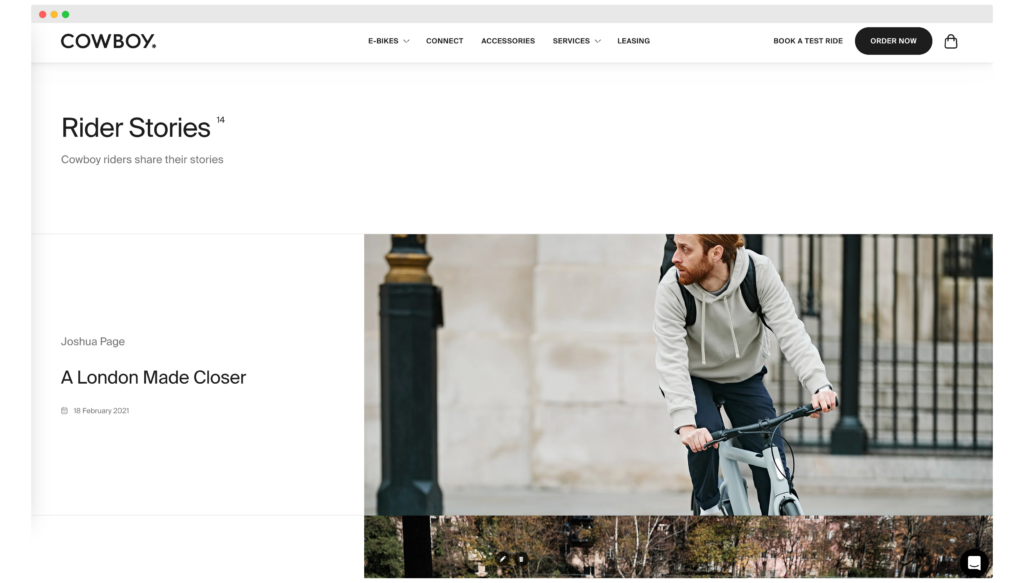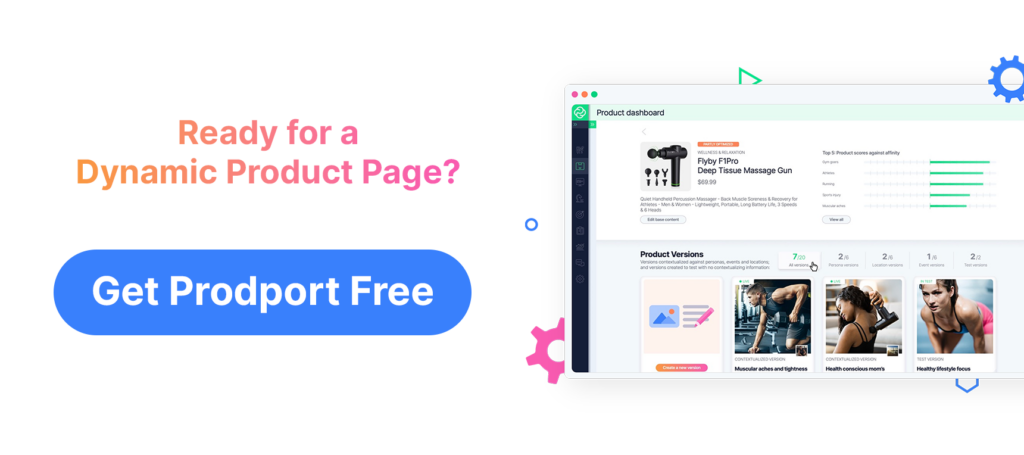As an ecommerce business owner, you’re likely always on the hunt for fresh and effective ways to boost sales and improve customer satisfaction, right. Here’s an idea you might not have considered before – product cases.
No, we’re not talking about physical cases to store your items in. We’re talking about detailed, real-world examples that demonstrate how your product solves specific problems or fulfills your customers’ needs. Never used those before? Then, our article will come in handy – we’ll tell you what product cases are and also provide actionable tips on how you can incorporate them into your online store.
What is a use case?
First, a few words of explanation of what even are use cases.
A use case is a specific situation where a product or service can be helpful for the users. You can think of those as mini-stories that describe:
- Who will use the product
- How they can use it
- and what they can gain from using it.
For example, let’s say you are selling durable backpacks designed for outdoor use. What do you think would convince someone to buy those more:
- A list of functionalities your backpack has?
- A user story describing someone taking it on a hiking trip to carry their essentials and keep the luggage protected from the elements?
Definitely the second one – since you are showing a real-life situation in which your backpack can be useful, you make it easier for potential customers to understand the practical value of what you’re selling. And that makes them more likely to buy the backpack for themselves.
Who creates use cases?
The second question you might have is who should be responsible for creating use cases.
Typically, they are created by people who know and understand their customers’ main needs or goals and can then tailor the product description to those. For example, you can ask your marketing team, customer support team, and product managers to work together on use cases since they both know the ins and outs of the product but also have a good grasp of what customers are looking for.
Working together, the team can pinpoint and outline specific scenarios where the product would be helpful the most and highlight its features and benefits in a way that could encourage potential buyers to purchase the product.
How is a use case different from a user story?
One more thing we should mention is that as similar as they might sound, a use case isn’t the same thing as a user story. Those terms are very often confused because they have the same goal – to make it easier to understand what the users need from the brand. They do it in a bit different way though.
A user story is usually a concise (one or two sentences) description of what a user needs and why they need it. For example, “As a busy mom, I want a fast-cooking microwave so I can prepare meals quickly.”
Use cases meanwhile are much longer and more detailed since the goal here is to outlines a specific situation when someone might want to use a given product and what they can gain from it.
How to define your product use case in 5 steps
Now that you know what is a use case, let’s talk a bit about how you can create a use case for your own products. Crafting one is actually much simpler than you might think – especially if you follow the 5 steps we listed below.
#1 Define the problem
The first step in crafting a compelling product use case is pinpointing the problem your product aims to solve. Helping users with specific skin problems? Improving home security? Or maybe making hiking trips more comfortable?
Once you identify the issues you want to focus on, it’s time to think about which traits or features of the product can solve those particular problems. When describing those, be as precise as possible – instead of saying your smartwatch “tracks health,” it’s better to say that it “monitors heart rate and counts calories burned during exercise.”
If you identify the problem and match the features to it, it will be easier later on to highlight to your potential customers the value your product provides.
#2 Identify personas
Next, you’ll want to get to know more about the customers you’re targeting. Here’s where user personas (detailed descriptions of the people who would benefit the most from your product) come in handy. How can you write one?
Make them detailed
Don’t skimp on the details. Describe the persona’s age, occupation, lifestyle, and even personality traits or online behavior. The more you know about the people who would use your product, the better you can tailor your use case to speak directly to them – and their goals.
Use the 5 Ws and 1 H
Another good tip is to use the classic formula of the 5 Ws (Who, What, When, Where, Why) and 1 H (How) while preparing the personas. Here are some of the questions that you can ask yourself while crafting those:
- Who are your ideal customers (age, gender, location, etc.)
- What activities or tasks are they engaged in where your product fits in?
- When and where would they use your product?
- Why would your product be useful to them?
- How would they use it?
Asking these questions will let you understand better who your ideal customers are and how your product might be useful to them.
#3 Compare your product with the alternatives
Now think about what other options your customers might have. Are there similar products on the market? Could they solve their problem without making a purchase? Researching this topic will show what you’re up against and what makes choosing your product a better option for consumers. That way, you will be able to create a more compelling use case that highlights why your product is superior to your competitors.
#4 Understand why users choose your product
While researching your ideal personas, it’s a brilliant idea to also look at what makes consumers choose your product over others. Is it because it’s the easiest to use out of the available? The eye-catching designs? Or perhaps there’s a unique feature that can’t be found in competitor products? The easiest way to find this out is simply to ask your existing customers about if – for example, by creating and sending surveys.
Your use case will be more persuasive if you can emphasize your product’s strong points – and even more, if you can spotlight customer reviews that prove those.
#5 Estimate the problem frequency
The last thing to research is determining how often your potential customers might be dealing with the issue you want to solve with your product. Is it a persistent issue (like regularly appearing acne) or something that bothers them only in particular situations (for example, while traveling)? Knowing this will help you understand how important and frustrating this issue is for your potential users and how to shape your use case strategy to address those issues.
For instance, if the problem is something that happens daily (like dry and cracked hands), you could show that your product is a long-term solution to the problem (it moistures and softens the hands thanks to aloe vera).
What are the benefits of use cases?
Those tasks might seem to be a bit time-consuming – will it be really worth the effort? Definitely – just look at the 6 ways in which use cases can elevate your marketing efforts.
Makes your product relatable
One of the most impactful advantages of using product use cases is that they make your product more relatable for potential customers. You don’t show them a long list of features potential users might not even understand. Instead, you match the product with a real-world scenario, letting customers visualize how it would fit into their own lives.
For example, let’s say you are selling a multipurpose bandana. You could simply list all the ways it could be tied – or, better, show the users where and how they can use it.
Highlights key features and benefits
Use cases work spectacularly well as a targeted way to showcase your product’s unique attributes or features. It’s like the old marketing saying goes – people don’t buy products, they buy a solution to a problem. If you frame the product as the solution to a specific problem, you can naturally draw attention to its best features.
And you don’t only create a checklist of what the product does. Rather, you explain how the features can solve a given problem the user might have – so shoppers don’t have to research how to use the product themselves.
Simplifies decision-making for customers
One more reason why customers like use cases so much is because they make deciding which product is best for their needs much easier.
It’s a great thing that we can shop at any place we want, even far away from our current location, absolutely. But how many times has it happened that you got overwhelmed and confused with the dozens of products and options? Probably a lot.
A product use case cuts through the noise by providing a tailored guide to why your product is the right fit for a particular need. Shoppers can find inside answers to most of the questions or doubts they might have, and this way, the use cases can also alleviate some of the decision-making stress and confusion the shoppers might feel.
Builds trust and credibility
Having product use cases on your ecommerce website does one more thing – proves to your customers that you really do know what they need and will do what you can to solve their problems. And as such, they will trust you more.
It works even better if you can add user reviews or testimonials to match the use cases. When you show potential customers how your product has been used by other users, it goes beyond mere marketing claims, “Our product can do X.” Rather, you give them solid evidence that your product can deliver on its promises. And when the shoppers see they can trust you, that will encourage them to buy something from your brand – and return to you later.

What can boost their confidence and trust in your brand even more, is if shoppers can see use cases that perfectly match what the shoppers are looking for now. Impossible? Not with Prodport 🙂 The platform can automatically customize the ecommerce store layout and content so every visitor sees tailor-fit content.
But that’s only one of the things Prodport can help you with – a live demo can show you far more. Or you can start from the free plan and test how the platform will work with your store – we are sure you’ll be amazed at the results.
Let’s wrap it up
Consider the entire user journey from a product management perspective. Your software development team, product team, and product developers should collaborate to create a seamless experience for your target audience. One effective way to do this is by developing user-focused and product-focused use cases that outline the basic flow of user interaction with your e-commerce site.
From the moment a social media user clicks on your ad to the point where they navigate through your product catalog and add items to their shopping cart, every step should be meticulously planned. This involves understanding different customer segments and incorporating customer feedback into the design process. Your business objectives should align with the user goal, whether it’s finding a specific product for review or exploring alternative options.
Design elements play a crucial role in enhancing user interaction. The user interface should be intuitive, and the design attributes should reflect the design scope of your e-commerce example. This is where your design team can bring in their expertise to ensure that the design details are not just aesthetically pleasing but also functional.
From a business process standpoint, check the type of user requirements that your e-commerce website needs to fulfill. The product owner should have a comprehensive product plan that outlines the success scenario for each feature.
For instance, if your e-commerce site specializes in fashion, a ‘Mix and Match’ feature could be a success scenario that allows users to pair different items together in simple steps.
Feedback loops are essential. Customer feedback should be actively sought and analyzed to understand user interaction better. This can be done through surveys or direct interactions on social media platforms where social media users are most active. Such feedback can provide invaluable insights into what works and what needs improvement.
Conclusion
The integration of product cases into your e-commerce strategy offers a multi-dimensional view that caters to various customer segments, providing them with a tailored experience that goes beyond the shopping cart. And that’s what you should care about.
Only focusing on all of these elements: the user journey, design process, and business objectives, allows you to create an e-commerce example that stands out, encouraging customer loyalty and boosting sales.

